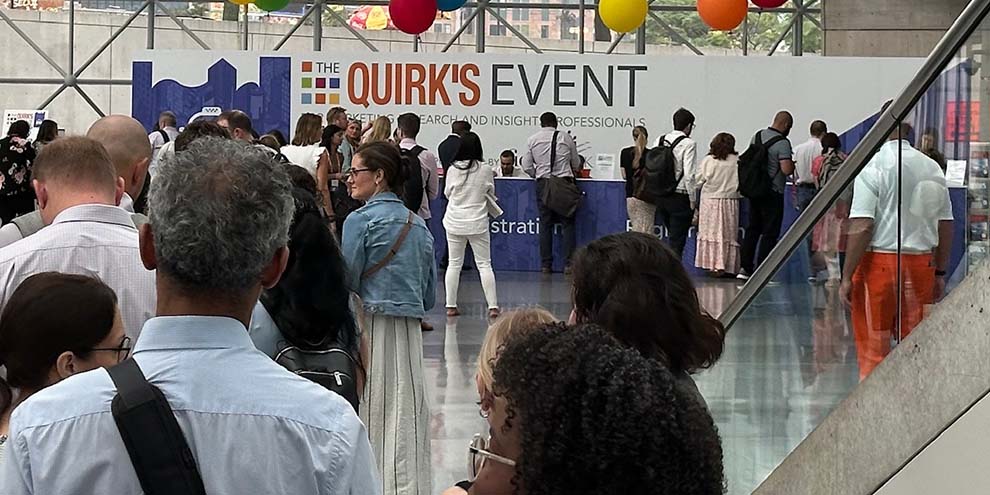Themes that stood out at Quirk’s Event – New York
Editor’s note: Kevin Cowan is audience research manager at BBC News This is an edited version of an article that originally appeared on LinkedIn under the title, “Quirks NYC 2024.”
The 2024 Quirks Event in New York brought together client- and supplier-side researchers for two days of insights and networking. It was a jam-packed event, with a huge expo hall and 50 presentations taking place each day. Quirk’s runs five 30-minute sessions concurrently so there are plenty of choices over what to attend.
For the second year running AI took center stage. Even sessions not on AI referred to it at some point, with one presenter joking he was told he had to mention AI somewhere in his presentation or would not be able to present.
There were lots of interesting themes covered and these are a few that stood out for me:
Content creation
Several presentations addressed content creation, particularly in the context of advertising and communications. A standout session delivered by Dinisha Cherodian, BAMM, and Francesca Springhall, McDonald’s on combining behavioral economics and qualitative research.
The problem they were trying to tackle was improving their reputation among those over 55 in the U.K. Communications around their sustainability commitments had helped increase overall endorsement of the brand but had less impact on the demographic whose perceptions had been shaped by outdated views from the 1990s.
The research came up with a trust framework for communications with three pillars:
- Humor – Very important in making creative memorable – linked to telling stories.
- Messenger – Two ways from behavioral economics work of delivering a message; messages from an expert and messages from somebody likeable/relatable. McDonalds had done a lot with experts but not with likeable/relatable people.
- Certainty – Providing certainty is critical. If I see others saying how good the quality is it will make me reconsider my view.
Messaging in the past had always been top down from the brand. They used this insight (which resonated with the creative agency Leo Burnett) to deliver a new campaign that instead of giving the audience facts from experts and trying to convince them McDonald’s is a trusted brand and to normalize having people talk in a fun way about the brand’s sustainability efforts.
The end result was the "Keep Up With The Times" campaign, which used visuals and cultural references from the ‘90s to help them show how McDonald’s had evolved but not everyone had kept up with these changes. The campaign proved highly successful with endorsement scores among the target group going up from 31% in 2023 to 38% in 2024.
In “Culture x fandom: Be the thing that people love,” Priscilla Aydin and Dana Sparber, NBCUniversal, looked at emotional connection with content. Media was described as essential for cultural connection, with 2 in 3 people in the U.S. turning to media to connect to the world. Furthermore, 87% were interested in seeing more people outside of their identity group.
Culture plays a significant role in how brands are perceived and content taps into both micro- and macro-culture – fast (e.g., fashion) and slower moving (e.g., politics). Fan groups emerge around content and have provided an opportunity for advertising. Thinking at NBC less about demographics and more about targeted groups now – e.g., tech fans – and making ads work for this group.
"Why interrupt the thing people love, when you can be the thing people love?"
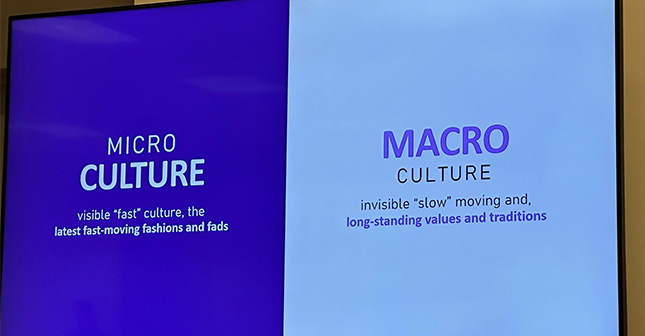
Aligning with rituals built on this theme, Idil Cakim, Audacy, presented research on how aligning advertisements with daily rituals, such as listening to audio content while working out, can enhance ad effectiveness. Audacy found that ads aligned with either the genre of content being broadcast, or daily rituals, led to an 8% uplift in brand favorability and a 9% increase in purchase intent, with those focused on ritual doing better than those focused on the genre.
This led to new thinking about creative for Audacy linked to ritual, for instance a parent picking up their child from school could hear and ad about conflict between a parent and child and resolving conflict based on music by downloading the Audacy app.
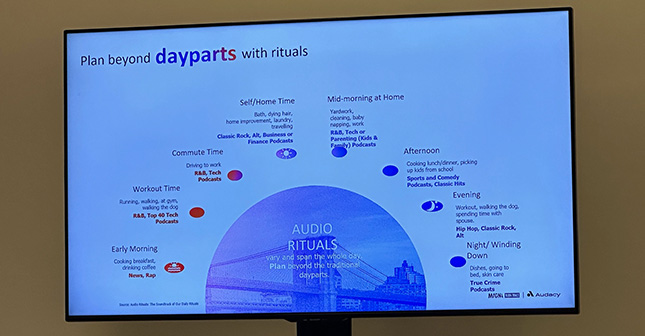
Reaching younger audiences
Gary Rudman, GTR Consulting, gave an enjoyable presentation on the unique characteristics of Gen Z (people born between 1997-2012) called “ALT, CTRL, SHIFT and UNDO: The 4 keystrokes that define the Gen Z worldview.”
This group has grown up in a digital age. Gen Z is often described as seeing adults as peers, feeling their opinions are just as important as yours and self-appointed arbiters of political correctness, unapologetic in boldly educating parents.
They defiantly stand up for their opinions, values and beliefs, happy to express when they are not feeling something and are advocates of mental health, having experienced significant social disruptions during the COVID-19 pandemic.
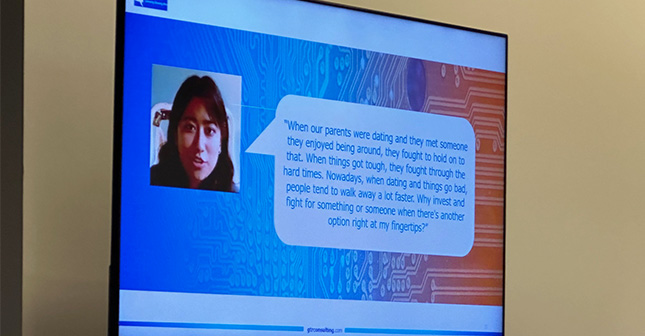
Growing up with smartphones has led to an interesting phenomenon called FOMA – fear of (feeling) mildly awkward. The comfort of screens promotes a polished online person and discourages spontaneous reactions.
So how do you reflect their world back to them? The advice given was to be adaptable and authentic. Prepare to be surprised. Regard Gen Z as if you were exploring a foreign culture. Be a blend of their favorite teacher and a peer. Give them experiences, make them feel engaged and empowered.
Running a successful insights team
James Wycherley from the Insight Management Academy ran two sessions at Quirk’s addressing different aspects of an insight team.
“Defining an insight team’s purpose in an AI shaped world” stressed the importance of having a clear purpose and aligning closely with business objectives. Six areas were highlighted to focus on to help add value:
- Get close to bottom line.
- Identify the biggest issues and how to understand them.
- Act as detectives.
- Value in accumulated knowledge not in a single project.
- Seat at the table – influence senior decision makers.
- Elevate understanding of customers – no matter how many people on an insight team there will be more stakeholders than members of the team.
The session ended on a cautionary note about not letting AI create a divide similar to that caused by big data, which led to the emergence of separate data teams. He encouraged insight teams to embrace AI as a tool to augment their work, such as using AI for generating headlines or automating routine tasks.
The second session, “Improving our Insight team’s profile,” looked at how teams can raise their profile. Four pathways were discussed for doing this:
- Brand – Develop your insight team brand.
- Awareness – Promote your insights team. Have insights days and festivals or associate your team with impactful work.
- Reputation – Good reputations rest on great experiences. Having systemized ways of doing things will help that.
- Process – Respect your organization’s rhythms and rituals. How good is your insight into your own organization? How well do we know which stakeholders to get close to? Insert the insight team in the annual planning process.
Improving research
How do you truly listen to the people you have included in your research? This was the topic covered in "Wide-open listening," presented by Susan Fader, FaderFocus.
“The saying ‘in one ear out the other’ speaks to the difference between hearing and listening,” Kelly Workman, PsyD
Listening is paying attention, not just background noise. Studies (both quant and qual) can sometimes feel more like an interrogation than a conversation. You want to make sure you are truly listening to the people you have included in the research. To do this you need to give up control and let the respondent lead the conversation.
The start of a study is crucial. What you ask and how you ask it can put constraints on what people will share and could even taint the ultimate findings. Design opening questions to help people get into the right mind space.
People may look the same but how they got there can be very different. Cognitive demographics helps with this and looking at value hierarchies. If family is the No. 1 priority start in one place, if jobs is the No. 1 priority start in a different place.
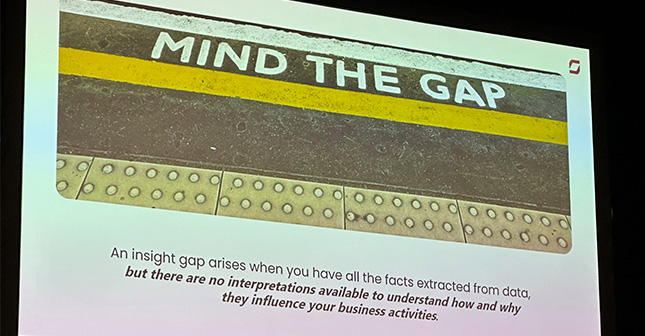
Caroline Parker, Sky, and Tania Montet, Stravito, spoke about democratizing and surfacing research and insights in their session, “Closing the ‘So what?’ gap: The power of research in data-led decision-making" Parker spoke about how, as a user of research, it is difficult to have confidence in findings when they do not have all the facts. She had a folder called “good slides I’ve stolen.” Not really a healthy place to be as they do not know who created the slides or the context around them.
Sky had an insight gap, which is defined as when you have the facts but there are no interpretations available to understand how and why they influence your business impact. Data and insight are only half the journey. It must be easy for consumers of the insight to find, reference and use it.
In “The true cost of (poor) quality: How fraud and bad data impact the bottom line and send clients packing” Roddy Knowles, dtect, talked about data quality in the research industry and how agencies often overlook the true cost of bad data.
When we come to buy a sample, do we really know where it is coming from?
There is often a push that data should be clean, but this is placing the focus in the wrong place. We should be focusing on real data instead.
Money gets thrown out the door by agencies – time spent on bad samples, data quality, data cleaning and refielding. The real cost of quality to an agency is losing a project. The industry needs to think about how to present fraud at the top of the funnel.
Looking to the future
“The sky is falling! Why didn’t anyone tell us?” was a really engaging session with Lisa Courtade, Organon & Co., and Melissa Spencer, Merck & Co. They talked about the difficulties in getting businesses to think beyond the short term. A key challenge for researchers is knowing what to pay attention to and how to create something actionable.
Strategic foresight was described as a bit like raising a child. You don’t know how well you have done until they are 40 years old! The lack of immediate measurable impact means you need to sell the art of the possible.
The curse of knowledge is a problem. While we think the future is a linear progression of the past the world isn’t static. Making the future actionable in the context of today's priorities is a key skill. Tips ranged from getting companies to run “what if” scenarios to disrupt reliance on the past and try to tackle the future in bite sized pieces (e.g., 10-minute podcasts discussing each trend).
